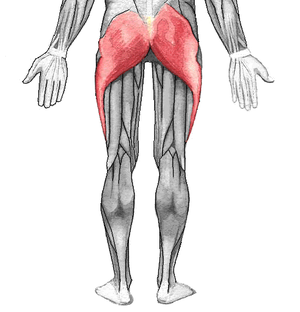Neuralgia, Neuritis-Safe Ways to Address Them
Neuralgia is pain in a nerve pathway. Generally, neuralgia isn't an illness in its own right, but a symptom of injury or a particular disorder. In many cases, the cause of the pain is not known. Older people are most susceptible, but people of any age can be affected. Specifically, it affects the peripheral nerves (those outside the brain, spinal cord, or central nervous system), blocking sensory and motor functions, with pronounced symptoms.
Almost everyone will experience mild neuralgia at some point, but these bouts are usually temporary and tend to ease by themselves within a few days. Some types of neuralgia are longer lasting, debilitating and so agonizing that a person's quality of life is severely reduced. Trigeminal neuralgia, a condition that usually affects one side of the face only, is said to be one of the most painful medical conditions. Neuralgia is usually managed with medications and physical therapy, with surgery an option in some resistant cases. Bowenwork can be so successful in addressing these issues that the conditions may be completely relieved.
Symptoms of neuralgia include localized pains, sensitivity to touch, sharp or burning pain depending on the nerve affected, muscle spasm though the affected area is still functional.
Neuritis is a complex process involving inflammation of the nerves, resulting in irritation that interferes with normal nerve function and the areas served. Symptoms can include numbness, tingling weakness or paralysis along with the pain of neuralgia
Causes of neuritis include:
Shingles - inflammation of a nerve, caused by infection with the herpes virus. This common type of neuralgia is known as post-herpetic neuralgia. The pain may linger long after the shingles rash has disappeared, particularly in areas of the face.
Infection - the nerve can be irritated by nearby infection, such as a tooth abscess.
Pressure or injury - broken bones, slipped vertebral discs or muscles (sciatica) or certain tumors can press and irritate a nerve.
Trigeminal neuralgia- the most common type of neuralgia, also known as tic douloureux. The trigeminal nerve supplies various areas of the face, including the cheeks and jaw. Trigeminal neuralgia is characterized by sudden jolts of shooting pain that usually affect one side of the face only. .
Occipital neuralgia-irritation of the main nerve that runs from the back of the skull can cause occipital neuralgia. This type of headache or pain is dull, throbbing and localized to the back of the head. The pain can sometimes include the forehead. It is suspected that tense muscles or ligaments may press against the nerve, causing irritation, inflammation and subsequent pain. Other causes may include viral infection, trauma to the neck or poor posture.
Traditional medical methods of neuralgia and neuritis treatment include pain-killing medications such as aspirin or codeine; anticonvulsant medications to treat the pain and muscle spasms associated with trigeminal neuralgia; antidepressants to help relieve pain in some cases; surgery to desensitize the nerve and block pain messages; physical therapy and chiropractic. All these methods are invasive and carry side effects.
Three important points: neuralgia is pain in a nerve pathway; generally, neuralgia isn't an illness in its own right, but a symptom of injury or particular disorders; in many cases, the cause of the pain is not known. Use a conservative apporoach and look at all factors, many times traditional methods may be guessing at causes and only treating symptoms and not causes.
Sciatica
If you notice a burning pain or numbness and tingling that runs down the back side of your leg, you may have an inflammation of the sciatic nerve. The sciatic nerve is the biggest one outside the trunk of your body. It begins in the lower back where five separate nerves make exit from the spinal cord between the lumbar vertebrae. They then come together making one long cable or wire cord-type nerve, which travels down the back of the thigh, knee, and lower leg. It sends out branches to all the muscles along the way all the way to the tip of each toe.
When sciatica comes on gradually, it is often due to inflammation caused by an infection such as a virus. It can also be caused by the effects of poor circulation to the nerve and by the deteriorating effects of diabetes. The gradual development of arthritis along the lower part of the spine is also a cause. Sciatic neuritis can also be caused by a bump or pressure anywhere along the course of the nerve in the back of the leg. Another more likely cause is impingement (or squeezing) by the internal flexor muscles of the hip, the psoas muscles. It is rarely due to a joint being out of place such as the sacroiliac or lumbo-sacral joints.
Mild cases can come and go and may recur unexpectedly over a long period of time without even becoming severe. Spells that come suddenly and that are severe will be very painful, causing problems with standing and walking. Even sitting and lying can be extremely uncomfortable. In such cases as these, there is a good chance a disc has bulged or ruptured demanding immediate attention. In all cases, the causes of sciatic neuritis has to be distinguished from causes other than inflammation, arthritis, neuropathy, and disc disease.
Ways to Heal
We can look at addressing inflammation through diet and nutrition, helping shift the body’s chemical balance form acid to alkaline either with drinking alkaline water, ingesting bicarbonate of soda or using an alkaline diet program and large doses of Vitamin D3. D3 also addresses inflammation and boosts immune response for infection fighting. Compression and arthritis and disc issues and occipital neuralgia can be addressed through gentle restorative postural exercise, osteopathic care, Bowenwork, Pilates, Somatics and other forms of enhanced movement and assisted stretching. Bowenwork has also been effective in relieving Trigeminal neuralgia
By taking responsibility for our situation and engaging in these positive actions we can address and even eliminate these pain problems from our lives.
copyright 2011 Kevin Minney
If you wish more information on any of the ways to heal discussed, feel free to ask or reply in comments.
Thanks.






